Amongst Mines and Miners – J C Burrow Cornish photographer
J C Burrow was a major recipient of medals from the Cornwall Polytechnic Society which was set up in 1832 to promote and further innovation in the arts and sciences. Cornwall was at the forefront of many innovative inventions and ideas in engineering often through its rich mining industry. In 1835 it received royal patronage from William IV and became the Royal Cornwall Polytechnic Society, more often known these days as ‘The Poly’.
Newspapers during this period and well into the early 20th century were very devoid of images and it was only seldom they appeared. It was noticed by one Herbert Ingram a newsagent and printer that when images did appear newspaper sales increased. This led him to founding The Illustrated London News in 1842 which included in its first edition of sixteen pages, 32 wood engravings. Engravings would improve over the decades being produced on copper then steal making the images far better and would often be coloured afterwards.
In today’s society it is all about images and no publication would sell commercially without pictures. Our whole lives are consumed with taking pictures and sharing them often in vacuous selfies to use on social media platforms. Thankfully, there are those that take photographs of the mundane, unusual objects and strange events that take their fancy or as part of projects or work.
Without this article moving into the history of photography, the big issue was not taking an image it was fixing that image in a permanent way. The earliest camera image surviving is one from 1827, by Nicéphore Niépce. There continued to be much experimentation with cameras and the fixing process and over time images improved considerably. This was something that the Royal Cornwall Polytechnic would encourage, exhibit and in time give prizes and medals for.
If anybody wants to see images of mining in Cornwall, especially miners at work underground during the late 19th century, it would most likely be photographs by John Charles Burrow a Camborne photographer that would be sought. During the 1890’s Burrows was asked by the owners of the Dolcoath, East Pool, Cook's Kitchen and Blue Hills mines to capture images of working life in these, the deepest mines in Cornwall. Burrows was a pioneer of flash photography and the setting up of his camera equipment together with the process of taking the images was very time consuming and complex. However, through his endeavours he managed to capture some of the earliest and best images of Cornish mining ever taken. These images will go down in history as a wonderful historic resource relating to Cornish mining.
Certainly, the quality and innovation used in Burrow’s work was well appreciated in photographic as well as mining circles. A book entitled, 'Mongst Mine and Miners or Underground Scenes by Flash-light, was produced by Burrow along with co-author William Thomas and published in 1893. Thomas’ input into the book was important in that in addition to Burrow’s images he added text regarding how work in the mines took place and why, along with a description of the mines and much other information. This book with its ground-breaking images was used for training purposes by the newly formed Camborne School of Mines, now one of the premier geology and mining university establishments in the world.
Shortly after Burrow had visited Dolcoath Mine there was a terrible accident when part of the mine collapsed at Level 412. Burrow had captured an image of place where the accident was to happen and although there were massive timbers in place, something that could not be explained caused a collapse and seven men were killed. One further man was rescued after 37 hours. This happened in the deepest part of the deepest mine in Cornwall and the lode being mined was said to be the richest lode of any in Cornwall. To have an image of this spot where the accident occurred adds to the understanding of this incident. Thomas in his text explains about the accident and the inquest in some detail, this adding to our understanding alongside the images of mining at depth during this period. Burrow also includes some pages on how the camera was used and his photographic techniques.
The book was republished in 1965 by Cornish publishers D Bradford Barton Ltd, which is a great benefit for those interested in the subject these days as an original first edition is rare and when available sell for considerable sums. Burrow’s images of the work Cornish miners were carrying out and the equipment, such as the man-engine used to transport men between mine bottom and surface, are incredible. Cornish miners were well known as ‘hard rock miners’ and exported Cornwall’s innovative mining techniques around the world when they emigrated for work, especially during the 19th century.
Burrows was elected to the Royal Photographic Society in 1893 and in their journal for that year there are several pages devoted to discussion on photography in mines. One William Elliott Debenham, himself a distinguished photographer, albeit mainly portraiture, said he had taken photographs underground at Botallack in 1865. He explained how this had been achieved, taking several in a day, however it does not seem that he was either successful or that they survived.
This photographic opportunity given to Burrow was it seems most successful, not only financially through book publication and sale of postcards, but he also received high recognition for his photographic work. The Royal Cornwall Polytechnic Society were certainly impressed winning a number of awards and medals over the period 1894 to 1908 for his work. Burrows received an award of a First-Class silver medal together with £10 (value today £820) in 1894 for his book and images. J C Burrow died in 1914 aged 62 leaving a wonderful legacy of images very much appreciated today, increasingly also as works of art, and a reminder of Cornwall’s great industrial age of mining and the miners that made it so.
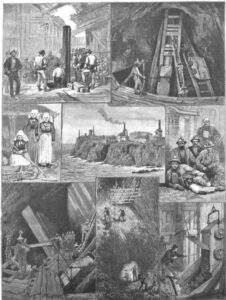
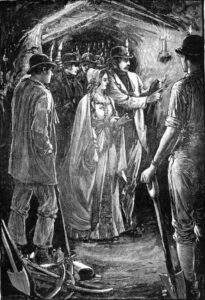
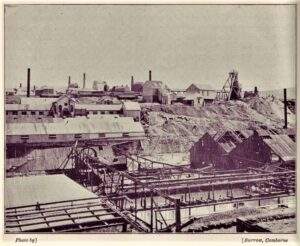
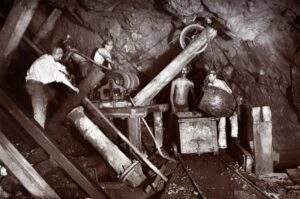
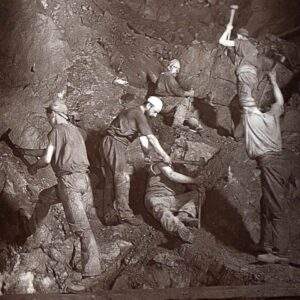
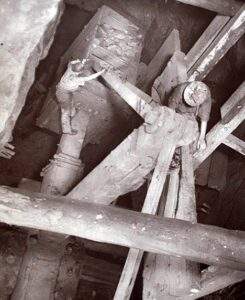
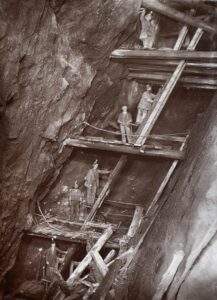
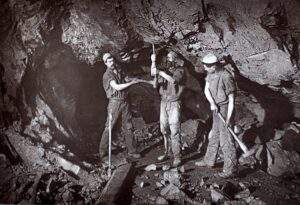
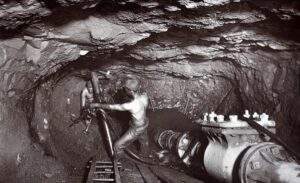
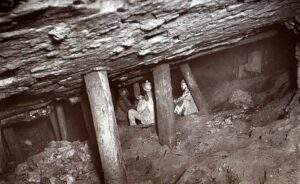
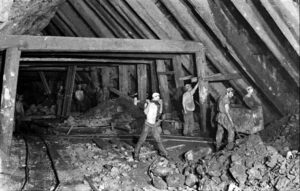
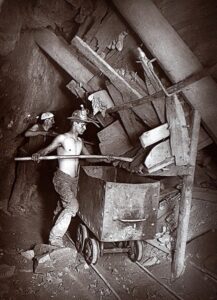
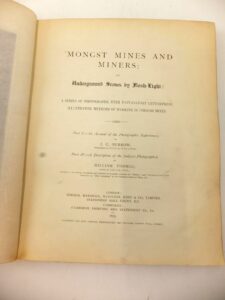
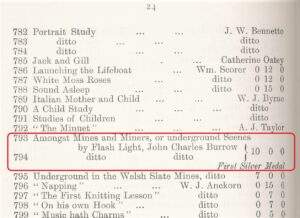
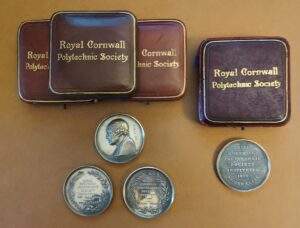
![[37] Voice - Ertach Kernow-100321A - Amongst Mines and Miners [S] J C Burrow 'Amongst Mines and Miners'](https://www.cornwallheritage.com/wp-content/uploads/2021/03/37-Voice-Ertach-Kernow-100321A-Amongst-Mines-and-Miners-S-232x300.jpg)
![[37] Voice - Ertach Kernow-100321B - Amongst Mines and Miners [S] Ertach Kernow -Amongst Mines and Miners](https://www.cornwallheritage.com/wp-content/uploads/2021/03/37-Voice-Ertach-Kernow-100321B-Amongst-Mines-and-Miners-S-233x300.jpg)